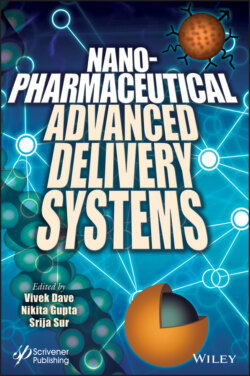Читать книгу Nanopharmaceutical Advanced Delivery Systems - Группа авторов - Страница 19
1.3.3 Nanostructured Lipid Carriers System
ОглавлениеNanostructured lipid carriers (NLCs) are a smart second-generation carrier system consisting of solid and liquid lipids. As we know, SLNs are the first-generation lipid nanoparticle that caused issue such as decreased drug encapsulation and storage instability. Later research turned towards the modification of SLNs that lead to the development of NLCs. This system consists of biodegradable and biocompatible lipids (solid and liquid); surfactants are approved for use in different drug delivery systems by regulatory authorities [16, 40]. NLCs have a whole range of unique benefits as compared to other systems such as higher drug loading capacity, more appropriate drug delivery system for various routes (topical, nasal, lung, ophthalmic, and parenteral), flexibility to modulate drug release, potential drug carrier in the future [41], minimal use of surfactants, etc. The usual diameter of NLCs range from 10 to 1000 nm. The amount of liquid lipid generally increases in such a way that nanoparticles evolve in the development of unusual shape, a non-perfect lattice, and create an amorphous structure. The solubility of the drug improves with the increase in the liquid lipid [42-45]. Nanorepair Q10 Serum (Dr. Rempler, Wedemark, Germany) and Nanorepair Q10 Cream (Dr. Rempler, Wedemark, Germany) were the first two marketed products of NLCs introduced by Muller in 1999/2009 and took 5 years to launch. More than 30 products are available in the market over the decades. The scientific community is also interested in the development of NLCs as an innovative drug delivery system. They are generally divided into three types and are described in Table 1.1 and shown in Figure 1.3.
Figure 1.2 A graphical representation of solid lipid nanoparticle.
Table 1.1 Types of NLCs classified based on structure.
| S. No. | Types | Description |
| 1. | Imperfect type | Disordered structure.The lipid arrangement between the crystal and the liquid lipid is unordered, which enhances the drug’s capacity to penetrate. |
| 2. | Amorphous type | Lack of crystalline structure, which prevents/decreases drug leakage. |
| 3. | Multiple type | Provides higher levels of liquid lipid than other systems.Achieves slow drug release and high drug loading capacity, thereby avoiding decomposition of solid lipid.Similar to w/o/w microemulsion. |
Figure 1.3 Type of the nanostructured lipid carrier.
